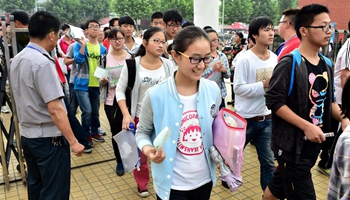By Catherine Sozi
Like many young married women in China, Mei Zi wanted to have a child. But because she was living with HIV, she denied herself this dream for many years. However, thanks to China’s successful programme to prevent mother-to-child HIV transmission, Mei Zi gave birth to a baby who was HIV-free two years ago. Now she is watching her son grow with expectation and excitement like many other mothers.
Mei Zi is one of many women living with HIV, who have shared their stories with me. Her happiness brings home to me the amazing progress China has made towards eliminating mother to child HIV transmission as part of its successful HIV programme.
Every year, globally, an estimated 1.4 million women living with HIV become pregnant. Untreated, they have a 15 to 45 percent chance of transmitting the virus to their children during pregnancy, labour, delivery or breastfeeding. However, the risk drops to just over 1 percent if antiretroviral medicines are given to both mothers and children throughout the stages when infection can occur.
While, China’s success in reducing new HIV infections in people who inject drugs has won global recognition, its efforts towards achieving an AIDS-free generation have received scant attention. The country’s achievement stands out - in particular because of the sheer geographical size, massive population and ethnic diversity of the country. Chinese authorities report that infection rates amongst babies born to HIV-positive women have witnessed a sharp decline of more than 80 percent in the past decade.
China’s robust health care system means that most of the more than 16 million women who give birth every year are delivering their children in healthcare facilities. The country’s prevention of mother-to-child transmission programme (PMTCT) began 15 years ago with a pilot in one county in Henan Province. While the scaling up of the programme was initially slow, a renewed commitment saw the number of implementing counties almost doubling between 2014 and 2015 to reach 3000 counties.
Now all hospitals and clinics providing maternal and child health services across the country implement PMTCT and HIV testing for pregnant women takes place in all antenatal clinics. In 2010, the government expanded the programme to include the prevention of syphilis and hepatitis B, which can also be transmitted from mother to child during pregnancy and delivery. This is an example of how the response to HIV is helping to improve health outcomes in other areas.
But even with so many steps forward, there is still work to be done. Chinese health authorities estimate that there were about 180 new HIV infections in babies in 2013.
Confronting and addressing issues of stigma and discrimination remains an ongoing challenge that is holding back some women from accessing the services they require and have every right to access.
While Mei Zi is happy to share her story, she is still afraid to use her real name and come out publicly about her status. Her experience with health care workers was generally positive, but unfortunately that is not the case for everyone. Also, women who use drugs, sex workers and migrants are often at higher risk of HIV and face a double discrimination from society that impedes their access to health services.
However, China’s leadership and communities are opening up to people who live with or are impacted by HIV. The First Lady of China is a champion of children living with HIV and top political leaders have spoken up in support of HIV-positive people.
China’s commitment to eliminating mother-to-child HIV transmission and the AIDS response will be evident this week at the United Nations High-Level Meeting on Ending AIDS in New York. We are at a unique moment in history. The country’s remarkable scaling-up of successful programmes like PMTCT and harm reduction are an example of UNAIDS Fast-Track approach. China is showing how to reach ambitious HIV prevention and treatment targets over the next five years. We will be on course to ending the AIDS epidemic as a public health threat by 2030.
Ensuring the success of the sustainable development goals, including ending the AIDS epidemic, will require global solidarity and partnership, especially in times of diverse and demanding global challenges. China has already achieved so much in the AIDS response and I know we can count on the country as a key partner.
(Catherine Sozi, UNAIDS Country Director for China)











